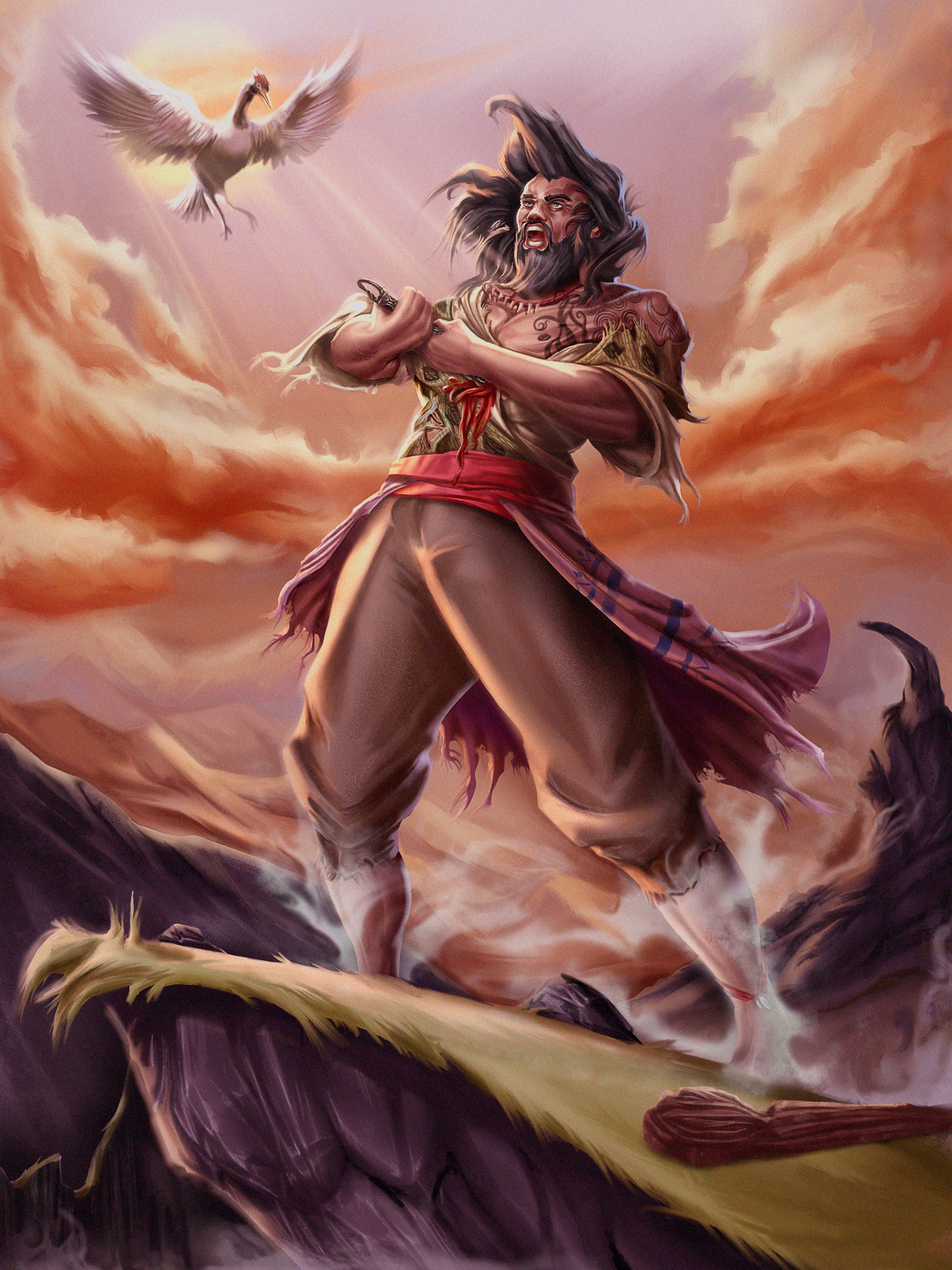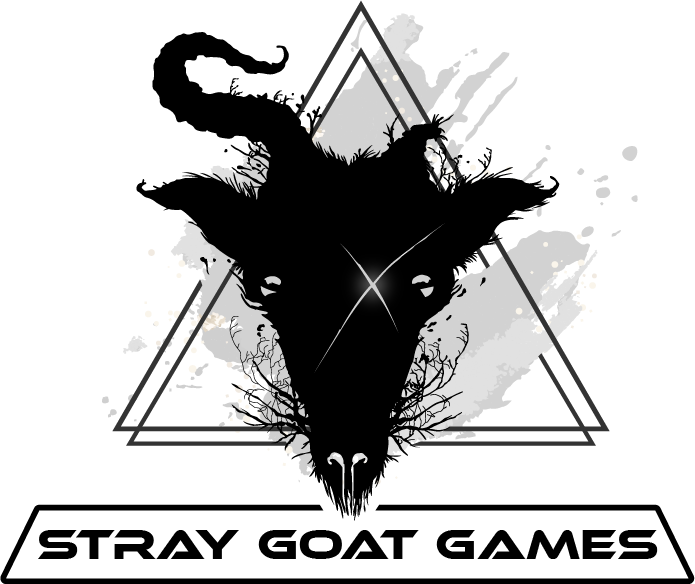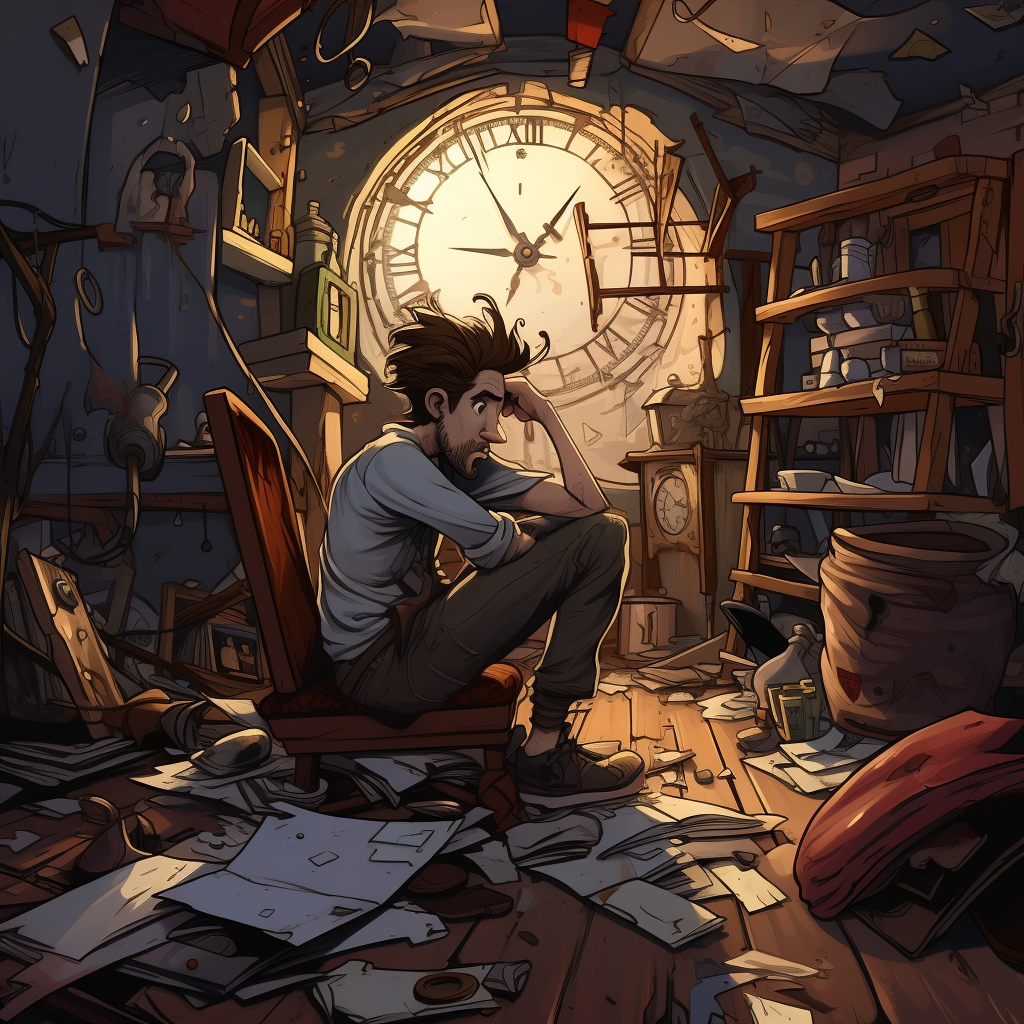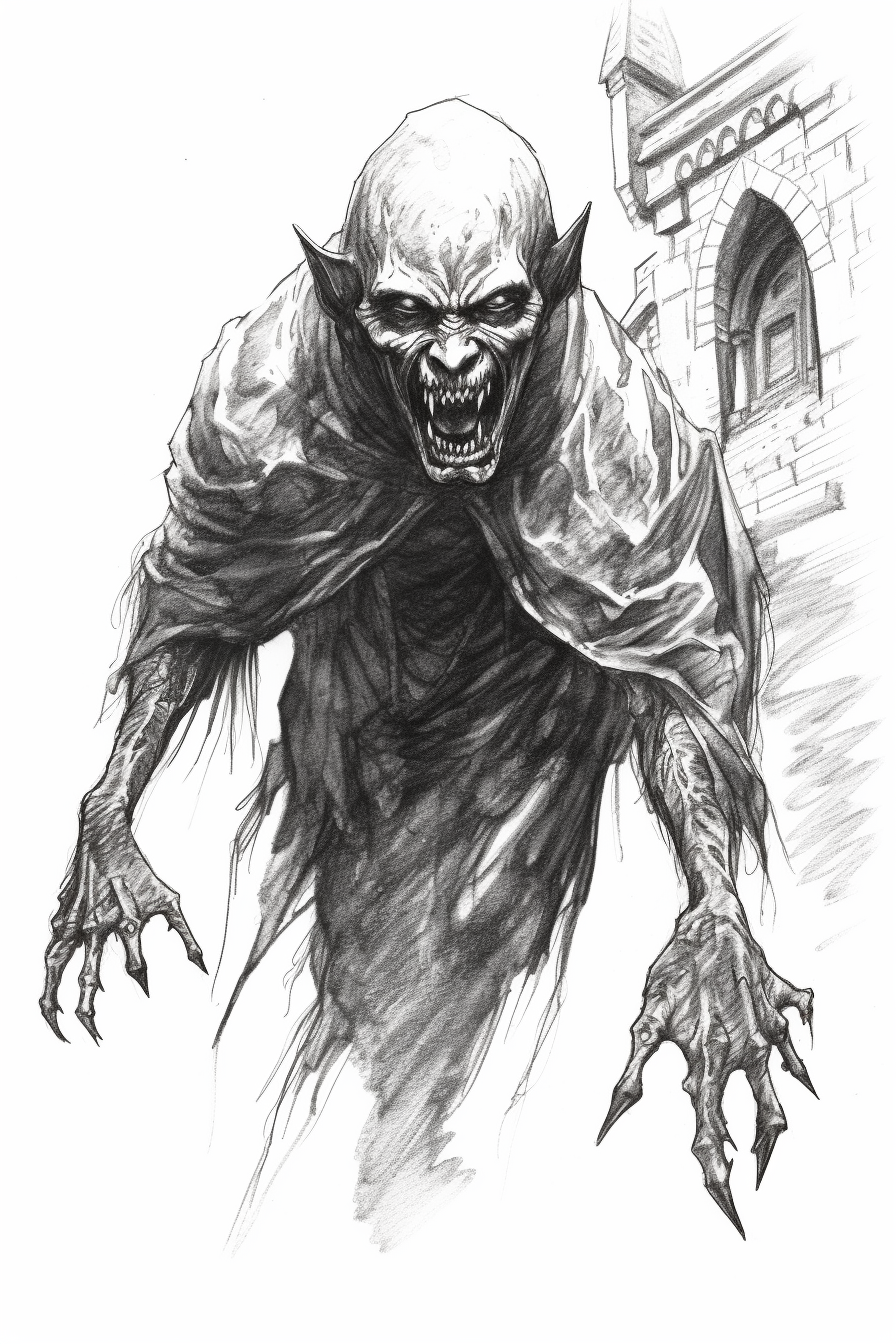Haraldo D. Artpocalypse
A.I. Art is weird sometimes. This particular image captures me perfectly. Unkempt. Drowning in ideas. An anatomy that gets more confusing the more you look at it…
I love Artists
A tabletop roleplaying guide needs a lot of images. However many you think it needs. It’s more than that. I promise.
Over the last 5 years, I’ve been commissioning art from artists all over the world to fulfil that need.
Sarah R. Davidson, Vincent Van Hoof, and David Coppolletti from here in the U.S. set the tonal range of Tribulation with many images, large and small.
Mon Macairap from The Philippines provided a large portion of the full bleed and sketch art in the guide. Then he took an arrow in the knee.
Lucy Lissett of Russia painted the ominous coming of age ritual many years ago. To this day, one of my favorite pieces.
Ayrton Scviana of Brazil likewise provided many full bleed and sketch images and has been fundamental in improving the overall design of the guide.
And let's not forget Qas from the UK, who provided the first ever commissions I requested for this project!
Of course, there are late entries still incoming that I look forward to sharing.






The slideshow above shows a few of the grander pieces of the guide that highlight the different talents mentioned. Images like these are few and far between in the guide, serving as part headers and centerpieces of the guide. I decided early on that most of the art in the guide will be of the greyscale sketch variety. This is both a stylistic decision and a pragmatic one, as these tend to more easily blend into a page and come at a cheaper premium.
That said, after tallying an estimate, I can safely say that I’ve spent over $6k (out of my own pocket) on art for this project. I'm happy to have done it. Even made some friends along the way. Artists bring vision to the project and even inform the lore with their interpretations. This is invaluable.
But…
Here comes the but.
I’ve started to integrate A.I. art into the process. I know. I know. It’s a contentious topic. One I’d like to explore in detail.
So let's do that.
I’ve discussed this with some of my artists. These artists seem to appreciate the tool when used to produce proof of concept references. In fact, the cover art was first imagined into existence using Midjourney references. I find this to be especially useful when working through a language barrier. On the other hand, when many artists (and some potential customers) see A.I. art on a product, it leaves a sour taste. And I totally get that.
That being said, I’ve concluded that A.I. generated art will serve to fill in some blanks on the guide for now. This will also expedite the final reach toward the release date of the core guide. Why? Well, the cost is difficult to justify at this point. While I do hope Tribulation finds its audience, I don’t expect to even come close to earning back the cost of existing art. Further, I’d like to transition my spending to editing, proofreading, and marketing proper.
A.I. art will make up a small and insignificant portion of the art in the core guide, and is reserved for the less engaging images (most of which my artists would rather not be bothered with producing - the industrial line art needed for a rulebook). I also keep these A.I. images tasteful. Let me show you what I mean. The slideshow below includes 1 A.I. generated image and 2 commissioned images (Can you spot the A.I. art?) The A.I. images I’ve generated for the guide aren’t particularly bold, but serve to give context to surrounding text and catch the eye when searching the guide for a particular block of text.
If you’ve never tried A.I. art generation, you might not realize how weird of a process it can be to convey simple styles and concepts. MidJourney in particular seemed to favor a very modern high fidelity, person focused image of a particular style. Tricking, massaging, and pruning a prompt to produce an image as simple a sketch of a medieval shield can prove more tedious than learning to draw it one’s self. So, for that, I have added sketch art to my bloated list of “things to learn how to do.”
So, tell me your opinion. Is this too much? Or have I spent too much commissioning art already? Is A.I. art for a project of this type entirely unacceptable? How would you handle it differently?
I love the creative contributions that real artists bring to the table. And I do want to keep artists fed. So here is my pledge. Should Tribulation be profitable, I will either work to replace existing A.I. art with commissioned art, or put those profits toward commissioned art in the expanded material.
At this moment, I have commissions in the works with two different artists for five images. It’s a habit I can’t quit, despite the time and money saving allure of the A.I.
If you want to support the project, or engage in a brutal but accessible tabletop rpg, grab The Crucible Edition of my guide. Or, just stick around.
Subscribe to the newsletter. Keep an eye out for what’s to come. Thanks for reading!




